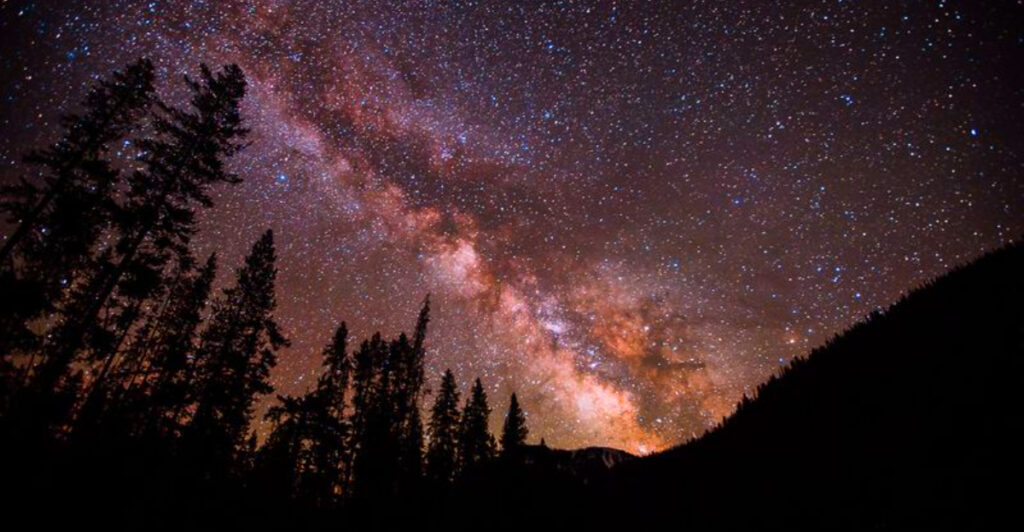America offers some of the world’s most spectacular dark sky destinations for noctourists seeking cosmic adventures. From desert landscapes to mountain peaks, these protected areas provide incredible opportunities to witness the Milky Way in all its glory. Whether you’re a beginner astronomer or seasoned stargazer, these carefully chosen locations promise unforgettable nights under pristine skies.
1. Cherry Springs State Park, Pennsylvania (East Coast icon)
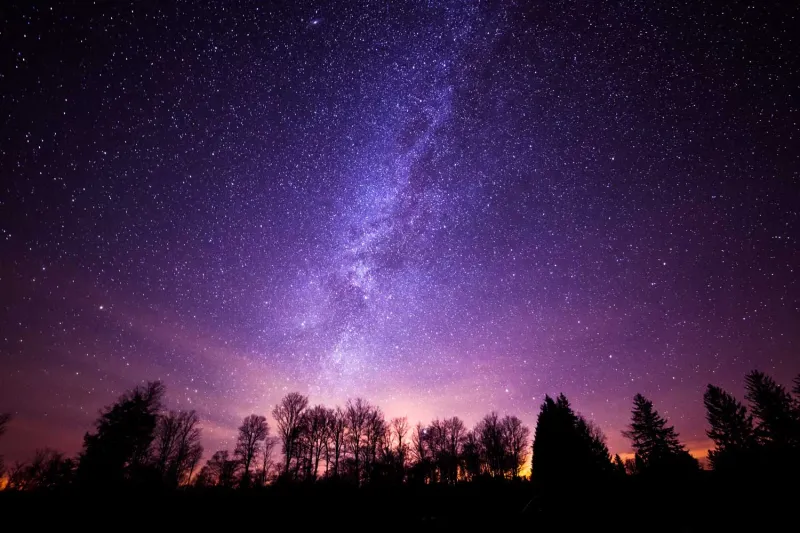
Perched high in Pennsylvania’s wilderness, Cherry Springs delivers the East Coast’s most reliable dark skies. The park’s dedication to astronomy shows through its specialized red lighting and multiple viewing zones.
Families love the designated astronomy field where telescopes gather on clear nights. The 360-degree mountain horizon creates a natural amphitheater for cosmic viewing.
Park rangers host regular stargazing events throughout summer months. Even beginners can easily spot constellations and the Milky Way’s bright arc stretching overhead on moonless evenings.
2. Katahdin Woods & Waters National Monument, Maine (Dark Sky Sanctuary)

Maine’s pristine wilderness earned International Dark Sky Sanctuary status in 2020, protecting vast forests and crystal-clear skies. The designation recognizes exceptional darkness rarely found in the Northeast.
Rivers wind through ancient woodlands while overhead, constellation patterns shine with remarkable clarity. Lucky visitors might catch the aurora borealis dancing across northern horizons.
Summer nights bring warm temperatures perfect for extended stargazing sessions. The Milky Way creates stunning arches above towering pine trees, making every photograph look like a postcard from space.
3. Big Bend National Park, Texas (desert darkness for days)
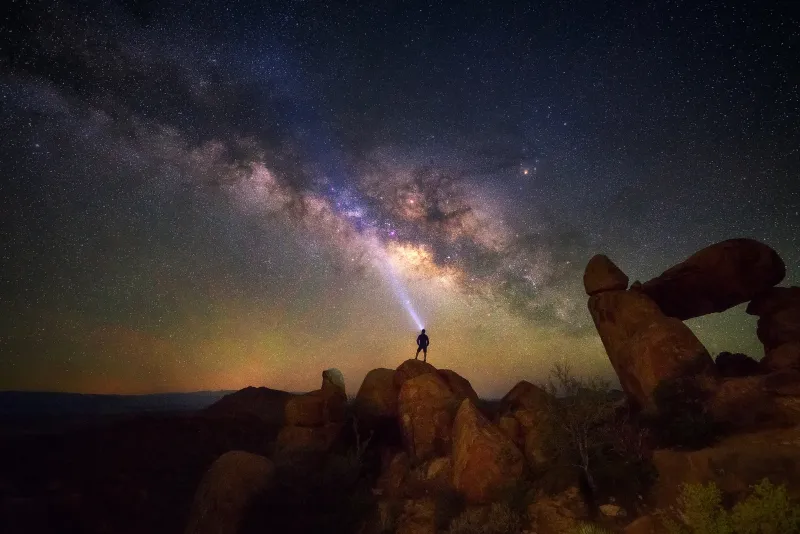
Far-west Texas geography creates some of North America’s darkest conditions at Big Bend. Hundreds of miles from major cities, light pollution becomes a distant memory here.
Desert landscapes provide unobstructed views in every direction. Park staff actively protect night environments and offer helpful stargazing guidance for visitors.
Winter months bring comfortable temperatures for all-night astronomy sessions. The combination of dry air and remote location produces incredibly transparent skies where even faint nebulae become visible to naked eyes.
4. Grand Canyon National Park, Arizona (a world wonder by day—and night)
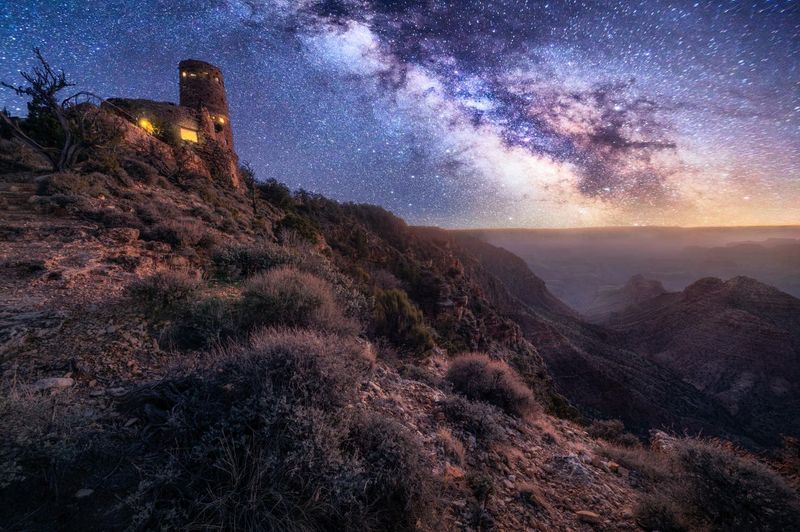
Since earning International Dark Sky Park certification in 2019, Grand Canyon transforms into a cosmic theater after sunset. South Rim overlooks become perfect stargazing platforms.
Annual star parties draw astronomy enthusiasts from around the world. Rangers lead educational programs explaining celestial navigation and constellation mythology.
The canyon’s massive scale creates a natural observatory where city lights can’t intrude. Standing on rim trails under brilliant stars adds another dimension to this already incredible natural wonder.
5. Bryce Canyon National Park, Utah (hoodoos under the Milky Way)
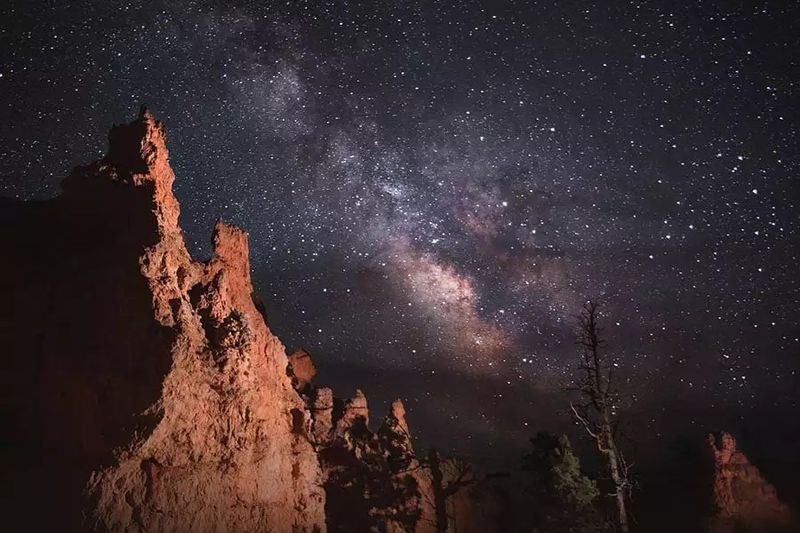
Bryce’s otherworldly hoodoo formations create magical foregrounds for night photography. High elevation and clean mountain air combine for exceptionally transparent skies.
International Dark Sky status arrived in 2019, recognizing the park’s commitment to preserving natural darkness. Remote location keeps light pollution minimal year-round.
Photographers flock here for iconic shots of stone spires silhouetted against star-filled skies. The Milky Way appears incredibly detailed, with dark lanes and bright star clouds easily visible without optical aid.
6. Natural Bridges National Monument, Utah (the world’s first IDA Dark Sky Park)
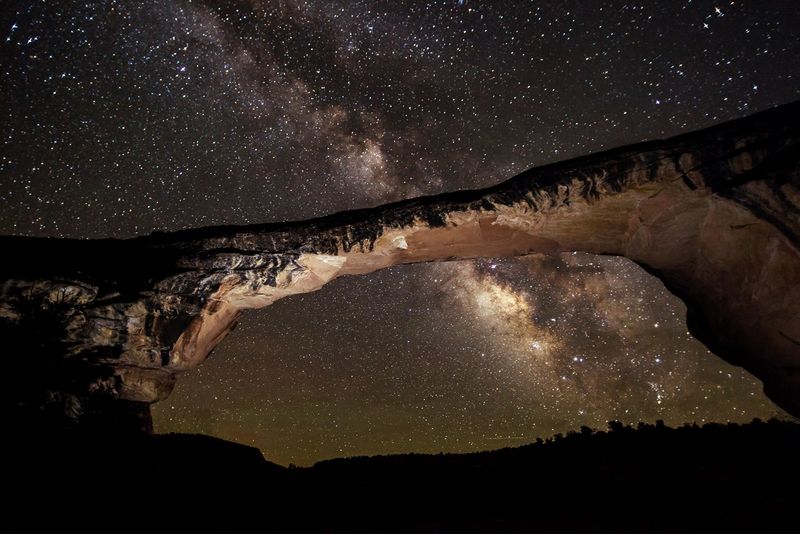
History buffs appreciate Natural Bridges’ pioneering role as the first International Dark Sky Park in 2007. This designation paved the way for dark sky protection worldwide.
Owachomo Bridge creates a stunning natural frame for Milky Way photography. Desert silence enhances the meditative experience of stargazing in this sacred landscape.
Small crowds mean peaceful nights under brilliant stars. The monument’s compact size makes it perfect for weekend astronomy trips, offering world-class darkness without extensive hiking requirements.
7. Great Basin National Park, Nevada (astronomy amphitheater & gold-tier skies)
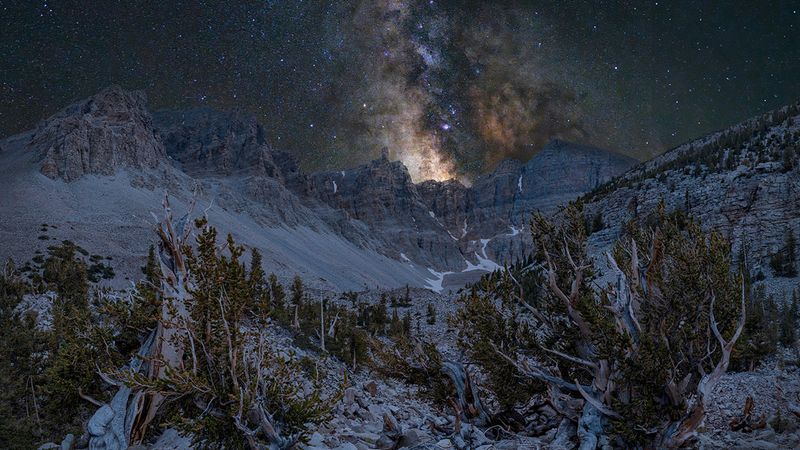
Among America’s least light-polluted destinations, Great Basin offers gold-tier darkness that astronomy enthusiasts dream about. The dedicated amphitheater hosts incredible summer programs.
Annual Astronomy Festivals bring together stargazers and scientists for educational workshops. Professional telescopes reveal galaxies, nebulae, and planetary details impossible to see elsewhere.
High desert elevation creates stable atmospheric conditions perfect for detailed observations. Even casual visitors can easily spot satellites, meteor showers, and the International Space Station crossing overhead.
8. Death Valley National Park, California (vast horizons, record-setting festival)
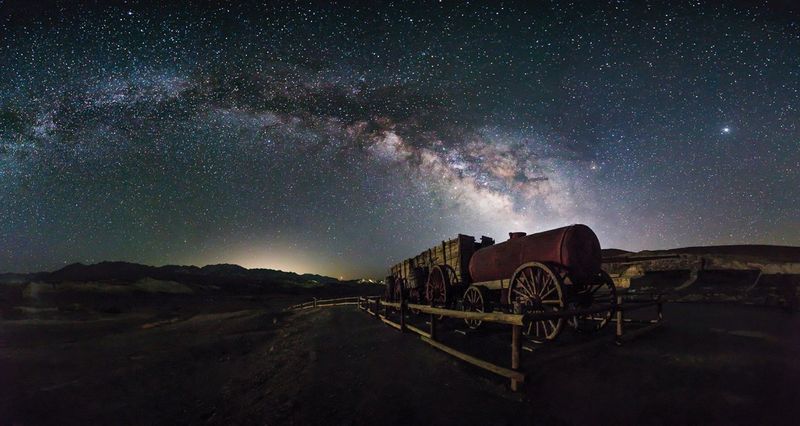
Death Valley’s extreme environment creates some of America’s darkest, driest conditions perfect for astronomy. The 2025 Dark Sky Festival drew record crowds to this desert wonderland.
Vast horizons provide unobstructed views from sunset to sunrise. Early Dark Sky Park designation recognizes the area’s exceptional commitment to preserving natural darkness.
February festivals offer comfortable temperatures for all-night stargazing adventures. Professional astronomers share telescopes and knowledge, making complex celestial objects accessible to curious beginners exploring the cosmos.
9. Joshua Tree National Park, California (SoCal’s go-to dark sky escape)

Just hours from Los Angeles, Joshua Tree offers surprisingly dark conditions for urban stargazers seeking cosmic escapes. International Dark Sky Park status since 2017 protects these precious night environments.
Iconic Joshua trees create fantastic silhouettes against star-filled skies. The eastern wilderness areas provide the darkest conditions within the park boundaries.
Perfect for introducing city dwellers to serious astronomy, the park’s accessibility makes it ideal for first-time noctourists. Weekend camping trips become magical under brilliant desert stars.
10. Great Sand Dunes National Park & Preserve, Colorado (sand, stars, silence)
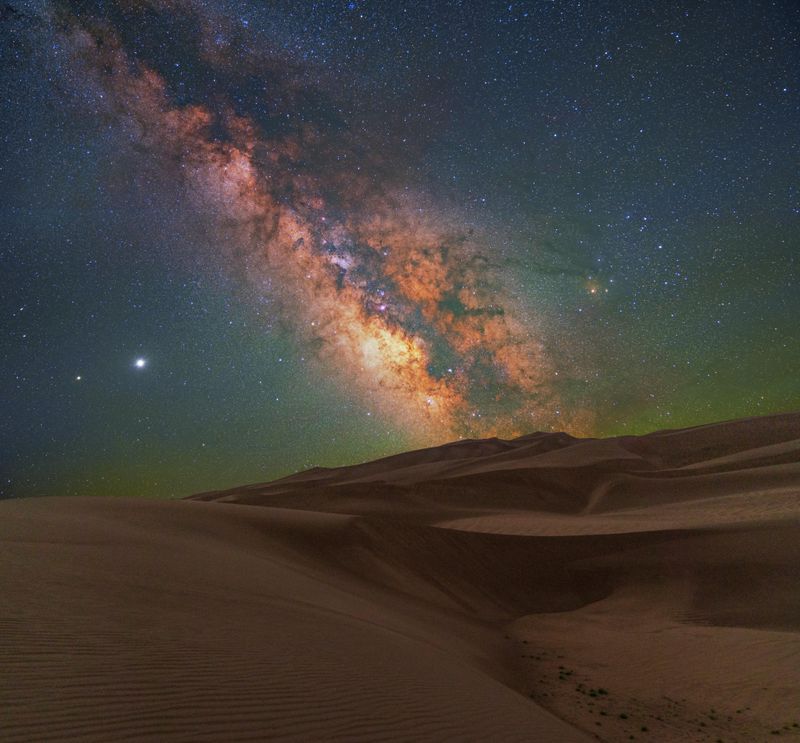
Rippled sand dunes glow mysteriously under starlight, creating surreal landscapes for night photography. Seasonal astronomy programs help visitors navigate complex star patterns overhead.
Pristine night skies earned official recognition for exceptional darkness. Moonless nights reveal dense starfields stretching endlessly above the dunes’ flowing curves.
High altitude location provides clear, stable atmospheric conditions year-round. The contrast between golden sand and brilliant stars creates unforgettable memories for families exploring this unique cosmic playground together.
11. Cosmic Campground International Dark Sky Sanctuary, New Mexico (bring a telescope)

The Northern Hemisphere’s first International Dark Sky Sanctuary sits deep within Gila National Forest. Exceptionally dark horizons make this a telescope enthusiast’s paradise.
Simple, astronomy-friendly infrastructure keeps light pollution minimal while providing basic amenities. Serious stargazers appreciate the site’s dedication to preserving natural darkness.
Remote location requires planning but rewards visitors with incredible cosmic views. Galaxy clusters, nebulae, and star formations appear with stunning clarity through even modest telescopes under these pristine skies.
12. Boundary Waters Canoe Area Wilderness, Minnesota (paddle into the stars)
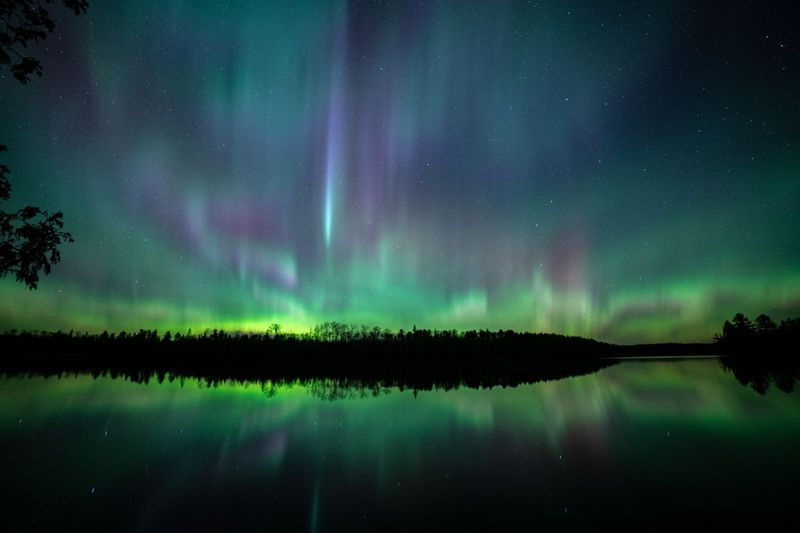
Million-acre canoe country earned Dark Sky Sanctuary designation in 2020, protecting pristine wilderness and crystal-clear night skies. Mirror-calm lakes reflect brilliant stars perfectly.
Loon calls echo across water while aurora occasionally dance overhead. Paddling to remote campsites creates intimate connections with both nature and cosmos.
Summer nights bring comfortable temperatures for lakeside stargazing adventures. The combination of water, wilderness, and dark skies creates magical experiences impossible to find anywhere else.
13. Oregon Outback International Dark Sky Sanctuary, Lake County, Oregon (largest in the world)
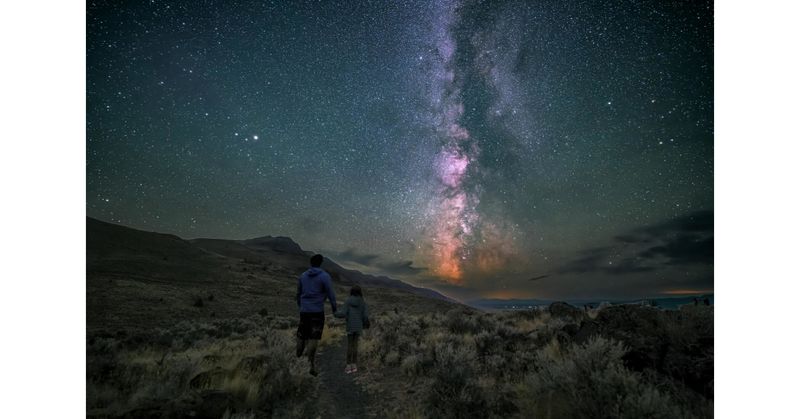
Certified in March 2024, Phase 1 covers 2.5 million acres of high desert darkness. Currently Earth’s largest Dark Sky Sanctuary offers truly world-class astronomical conditions.
Vast scale provides endless exploration opportunities for serious astronomy enthusiasts. Remote location and dry climate create exceptionally transparent atmospheric conditions.
Recent designation means fewer crowds and pristine experiences for early visitors. The combination of size and darkness quality makes this sanctuary a game-changer for American noctourism adventures.
14. Central Idaho Dark Sky Reserve (Ketchum/Sawtooth), Idaho (America’s first reserve)
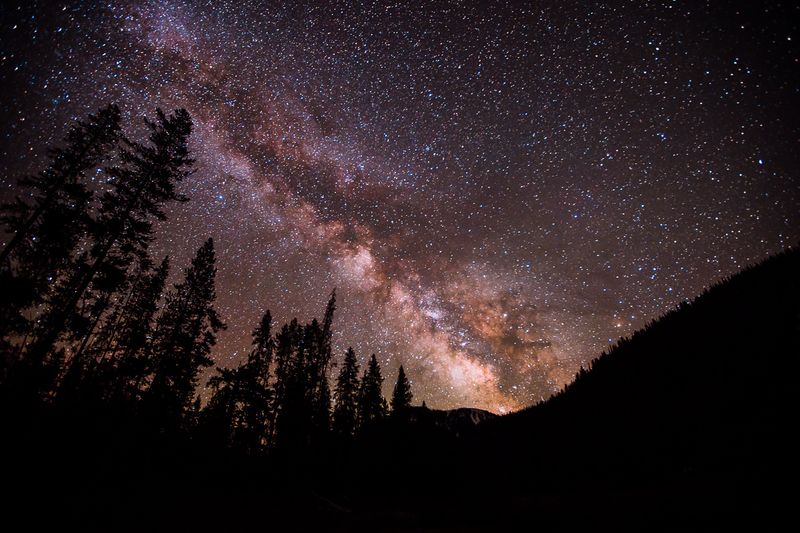
America’s pioneering International Dark Sky Reserve spans 1,416 square miles around the spectacular Sawtooth Mountains. Gold-tier designation recognizes exceptional darkness and community commitment.
Towns like Ketchum actively support dark-sky preservation through lighting ordinances and educational programs. Summer brings numerous astronomy events and workshops.
Mountain peaks create dramatic silhouettes against star-filled skies. The reserve model balances human activities with night sky protection, proving communities can thrive while preserving cosmic heritage.

